In Vietnam, Savoring History Through Ho Chi Minh City’s Street Food
An increasingly modern metropolis spiked by skyscrapers, Vietnam’s Ho Chi Minh City now brims with haute cuisine, ritzy rooftop bars, five-star hotel restaurants and venues serving food from nearly every continent but visitors should start with Vietnamese food first. To get to know this city – and Vietnam more broadly – travelers should take to their taste buds to the streets.
During my eight visits to Ho Chi Minh City, pictured at top, I learned many strands of Vietnam’s history while eating street food served by carts on sidewalks, vendors in alleys, stalls in parks and simple roadside restaurants. I took my lead from locals, pulling up a chair at venues swollen with customers.
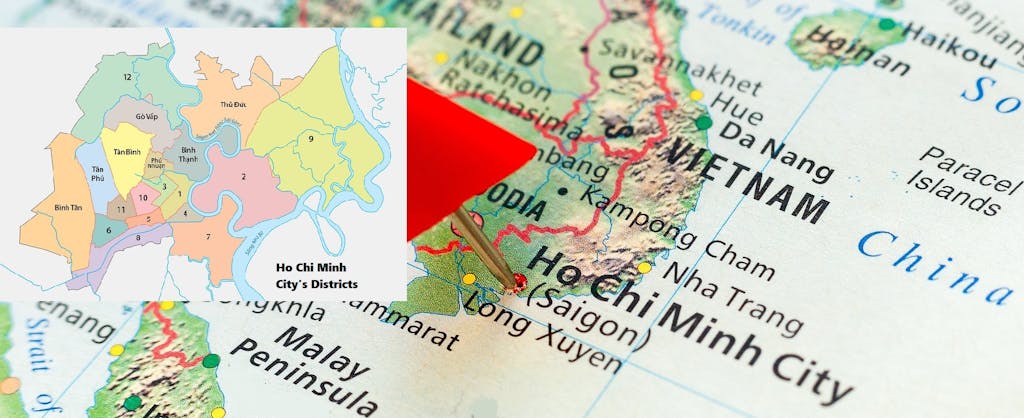
In the process I discovered Vietnamese food that was not just addictive but also embedded with ancient tales of mighty warriors, fallen dynasties and colonial legacies.
Here are five of my favorite foods in Ho Chi Minh City and the stories behind them.
Banh Xeo
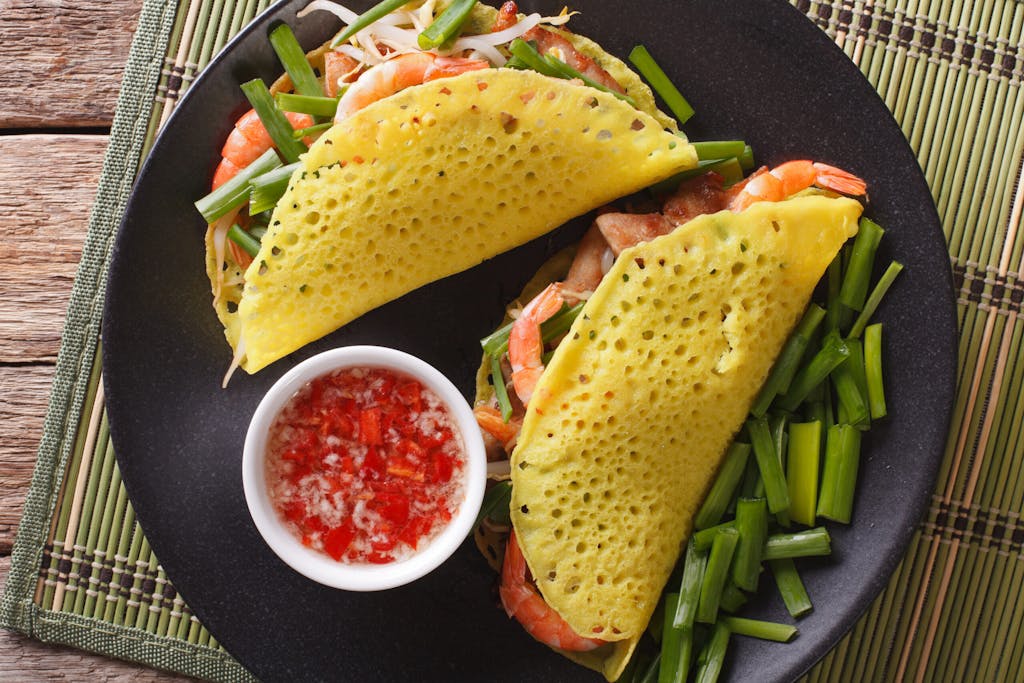
When first I saw Banh Xeo in Ho Chi Minh City’s busy District 1 neighborhood, I wondered why an elderly Vietnamese woman was selling Mexican food. Soon I realized these were not tacos but crispy crepes made from turmeric-infused batter that are folded over and stuffed with pork, prawn and bean sprouts.
Served with lettuce and dipped in Nuoc Cham sauce – a bracing mix of chile, sugar, lime juice and fish sauce – Banh Xeo is simultaneously crunchy and soft, sweet and savory. It abounds in the streets near Tan Dinh, the historic indoor market in District 1. Down here, in southern Vietnam, Banh Xeo are large, sometimes the circumference of a dinner plate. In central Vietnam, their place of origin, they’re petite. This distinction can be credited to the powerful Nguyen Dynasty, which held sway over Vietnam from 1802 to 1945.
Emperor Tu Duc, Its longest-standing ruler, favored lavish banquets inside what is now one of Vietnam’s key tourist attractions, the Imperial Citadel at Hue in central Vietnam. Intent on savoring as many different dishes per meal as possible, he requested each one be shrunk, resulting in this region’s signature, small Banh Xeo.
Bahn Mi
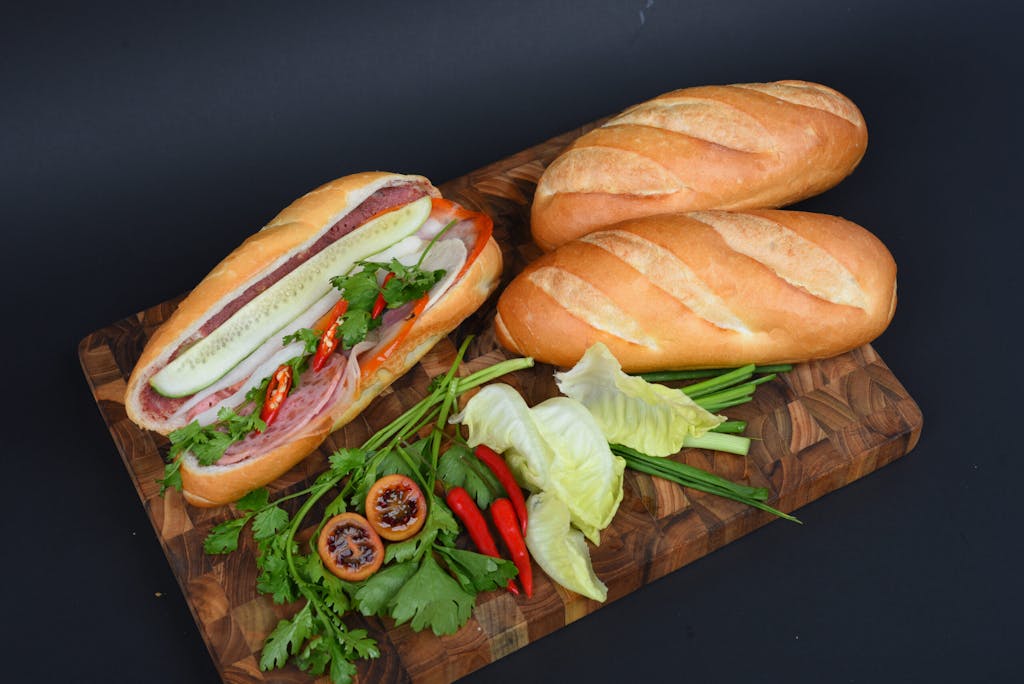
The Nguyen dynasty’s power became diluted after the French invaded Vietnam in 1858. Aside from the graceful colonial architecture of Ho Chi Minh City and Hanoi, the clearest legacy of this French occupation may be Banh Mi.
Vietnam’s famous baguette sandwiches can be traced to the arrival of the French, who introduced bread. But Banh Mi didn’t boom until the 1950s when locals realized they could mix cheap rice flour with wheat flour to make bread more affordable. The resulting baguettes are fluffier and lighter than European versions.
They have considerable heft by the time they become Banh Mi, laden with pork, pate, herbs, mayonnaise, chili sauce, soy sauce and pickled vegetables. To satisfy my Banh Mi cravings, I head to the area near Ben Thanh Market, where vendors load their baguettes with a fried egg and up to five styles of pork. Good luck walking back to your hotel after consuming that.
Com Tam
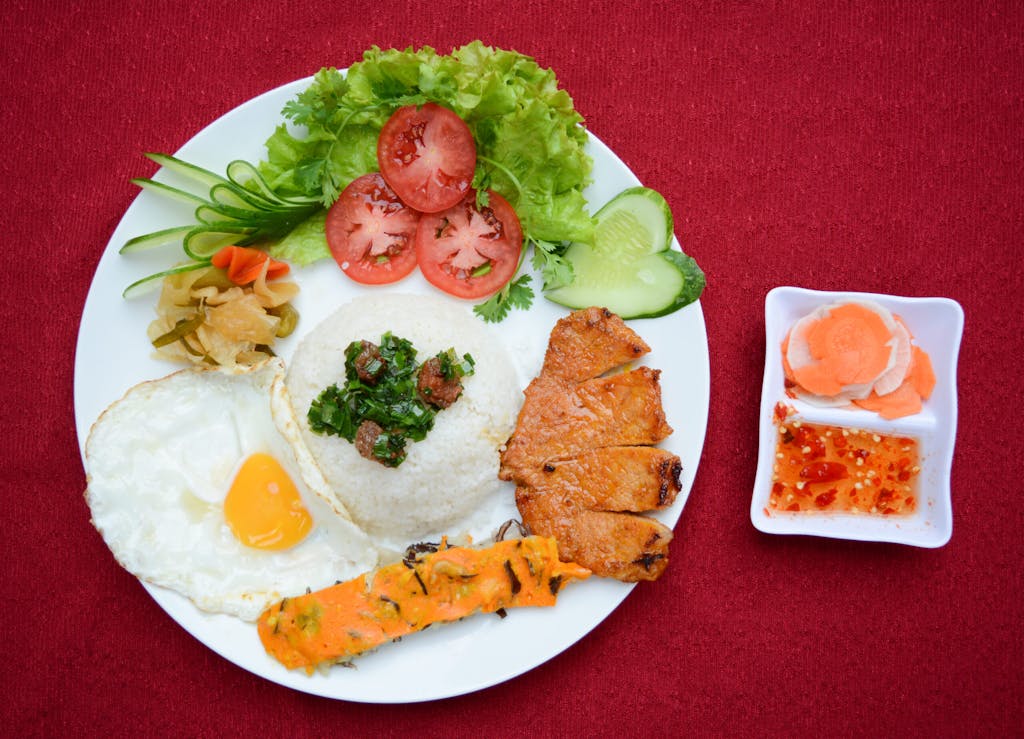
In the warren of streets south of backpacker haven Pham Ngu Lao, I found many stalls serving a dish that sounds flawed yet tastes perfect. This is Com Tam, or broken rice. It consists of fractured rice grains that clump together when steamed.
Com Tam typically is used as a bed upon which rests more flavorful offerings such as Suon Nuong grilled pork chops, Cha Ca fried fish and Cha Trung pork-and-egg meatloaf.
Topped with mint, coriander and spring onions, intensified by Nuoc Cham sauce, and paired with pickled vegetables, Com Tam is a heavy dish I save for dinner. But locals eat it any time of day.
Rooted in this dish is a harrowing backstory, which I heard at its birthplace, Vong village in Hanoi. There a broken rice vendor told me this: local legend: During an ancient famine, Vong farmers made an unexpected discovery. Starving and unable to wait for their rice crop to mature, they roasted, then crushed unripe rice grains to make them edible.
The result was a new, chewy product that became a staple of Hanoi cuisine and spread across Vietnam.
Pho
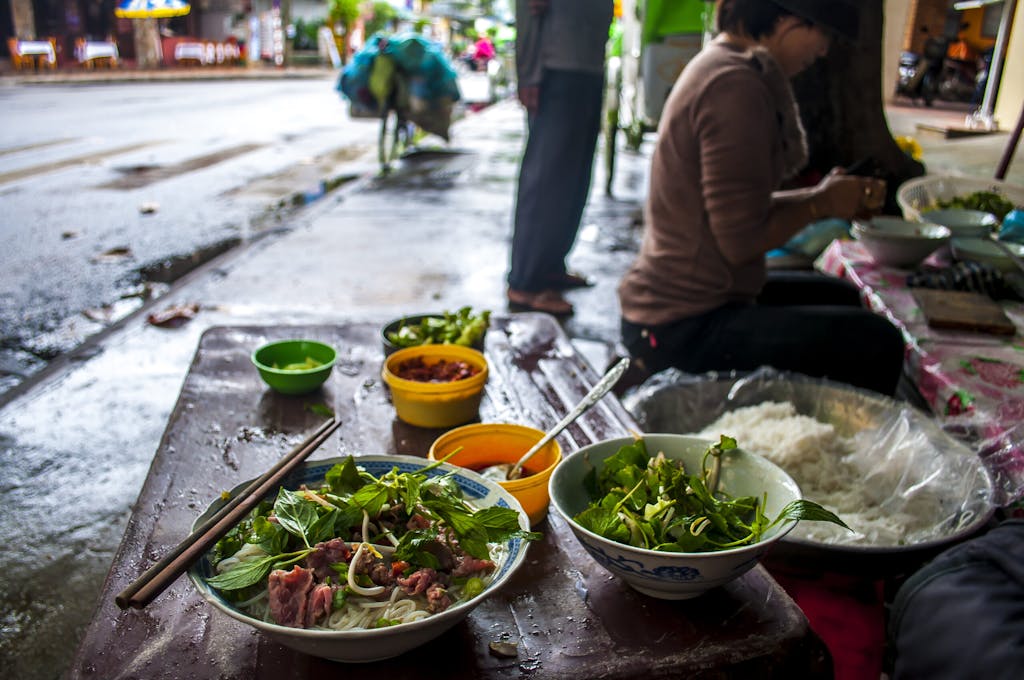
On my first visit to Vietnam in my early 20s, I was a reticent eater, balking at cuisine that felt alien – except when it came Pho, the national dish. At first glance, Pho (pronounced FA) appears like the simplest of comfort foods. Yet the reason this noodle soup is so satisfying resides in the complexity of its ingredients.
These vary among versions of pho, but commonly this dish requires beef or chicken stock, cinnamon, ginger, chile, cloves, sugar, basil, star anise, fish sauce, soy sauce, plus beef or chicken. Then this light but flavorful soup is poured over thin rice noodles and garnished with coriander, onion and spring onion.
There’s no need for me to recommend a Ho Chi Minh City location for eating Pho. It is ubiquitous, and I’ve never had a bad bowl. Local expectations of Pho are so lofty that any business producing inferior versions will dissolve like palm sugar in a simmering broth.
It has been this way since the late 1800s when Pho emerged thanks to the influence of either the French or the Chinese, Vietnam’s burly neighbors. Some historians suggest Pho spawned from pot au feu, the classic French beef stew. Others point north to China, which occupied Vietnam so many times across more than a millennium that it was bound to leave behind recipes, like its braised beef noodle soup.

For lunch, I typically don’t want soup, a bulky sandwich, a stuffed crepe or ruptured rice. While walking the hot, humid streets of Ho Chi Minh City I prefer a light, easy-to-carry snack. Goi Cuon, or fresh spring rolls, is designed just for this purpose is.
Many types of spring rolls are deep fried, leaving their rice paper wrappings crunchy and oily. With Goi Cuon, the paper is soaked in water so it’s soft, stretchy and more unobtrusive, acting as a mere vehicle for the flavors within.
Amid the food bonanzas of District 4’s Vinh Khanh street, or Co Giang street in District 1, you’ll find classic Goi Cuon, filled with coriander, basil, mint, raw vegetables, vermicelli rice noodles, and pork or shrimp. The finishing touch is dipping your roll in Nuoc Cham sauce or Tuoc Cham sauce, a mix of hoisin sauce and peanut butter. Then you can carry on about your business, satisfied yet light of foot, like a Tay Son warrior.
Legend has it Goi Cuon was invented as a portable meal for soldiers flying the flag of Emperor Quang Trung, who led the Tay Son Dynasty that ruled a swath of Vietnam in the 1700s before the Nguyen Dynasty muscled in.
Do you find yourself craving Vietnamese food now? Check out these cruises where you can eat your fill on foodie excursions.
